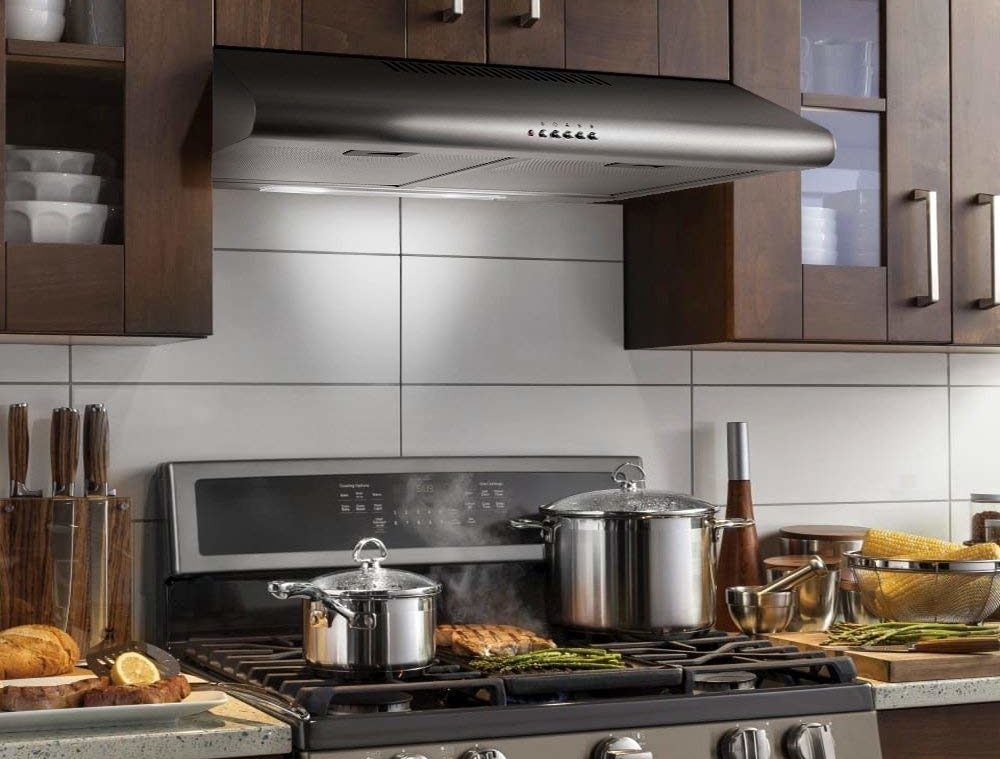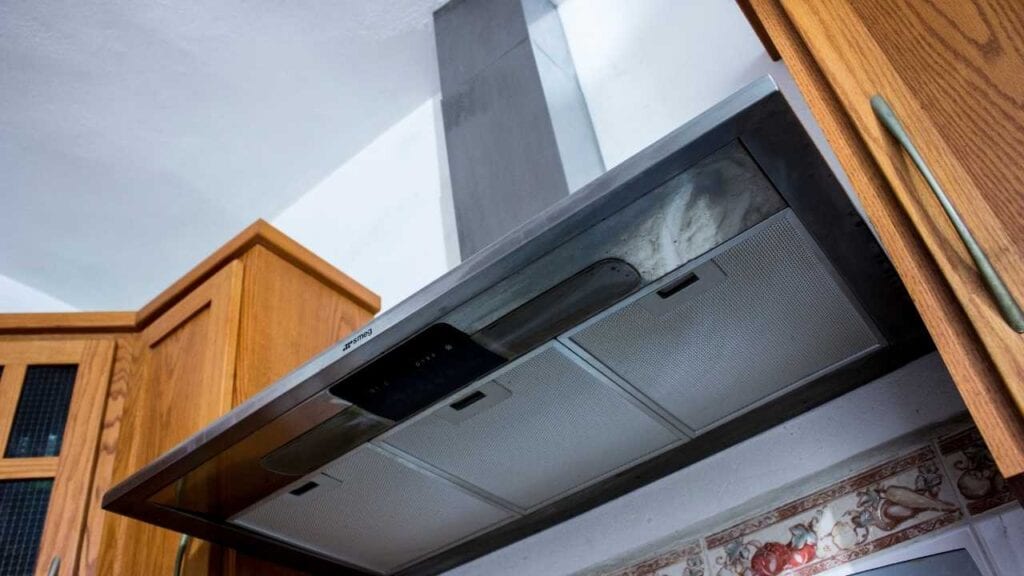Range hoods are a vital part of every kitchen that helps eliminate fumes, vapor, and cooking smells. The right unit will help you keep your kitchen comfortable, clean, and improve its aesthetic appeal.
However, it can be challenging to select the right option with so many types and brands available. Your choice will depend on your kitchen layout, your stove type, and your personal preferences. Here is a detailed guide to help you make an informed purchase.
Types of Range Hood
The most common options available include;
Under Cabinet
It suits you best if you have cabinets or storage above your cooktop. You mount the unit below the cabinets and install ductwork inside the wall, ceiling, or the chase to channel out smoke and fumes. The range hood quickly adapts to your cabinetry, creating an appealing design.
Wall Mount
If there are no cabinets over your cooking surface, then you can consider the wall-mounted option. You install it safely against your kitchen wall and align it with your duct system for ventilation. They have a wider bottom, which offers better coverage for your cooking top.
Further, these types of hoods come in different shapes. You can opt for the pyramid or tapered style based on your preferences. They occupy quite a larger space may not suit you if you have a smaller kitchen since you can’t put up storage spaces around the area.
Island
It features a sleek contemporary design, mounted and vented through the ceiling, making it a beautiful counter piece for your kitchen. The option works well for large cooktops since it can handle extra output associated with additional cooking tools. With this type, you need to ensure that you purchase a large capacity range hood to keep up with your cooking needs. Further, some contractors may opt to install it a bit higher to avoid blocking your sightline.

Cabinet Insert Hoods
You can consider installing the range hood inserts within your cabinets above your cooking surface for a more customized option. It’s a convenient unit since you don’t have to remove your existing storage. It blends in well with the already installed cabinet in your kitchen.
However, you will need a contractor’s help to fit the unit into your kitchen set up. This option gives you full control to determine the look of your kitchen ventilation.
Downdraft
Downdraft range hoods reverse the direction of rising fumes and smoke to exhaust them through underground ducts. You install them behind your stove, and works best for drop-in cooktops.
It’s also an excellent option for a smaller kitchen with stoves against the wall or a kitchen island. One main advantage of this option is its obstructive design that easily complements any style in your kitchen. However, it might not cover the cooktop efficiently like other alternatives to fully capture the fumes.
Microwave Range Hoods
If you wish to save on space, and at the same time, create a conducive cooking environment, you can opt for the over the range microwave hood. It contains an inbuilt fan beneath the microwave, which helps eliminate fumes from the cook surfaces below.
Professional Hoods
It’s a professional range grade hood similar to under cabinet model but has more power. They work great for individuals who cook a lot since they come with a powerful fan and multiple controls to help eliminate harsh smells.
How Does A Range Hood Work?
Range hoods operate differently depending on the type of ventilation involved. It can either be ductless or ducted. For a ducted range hood, you connect it to a duct that directs fumes from your cooking top outside. When the hot gases rise, the electric fan sucks them up, leading them to the vent that channels them out.

After the electric fans suck up fumes for the ductless range hoods, they go through the filter to remove smoke and grease particles. The filter also contains activated carbon or charcoal that helps eliminate odor from the air.
The electric fan then cools the air and recirculates it back to your kitchen. To keep the unit running, you might need to change the filters after six months or three, especially if you often fry food with oil.
Which Is Better Ducted or Ductless Range Hood?
Whether to go for the ducted or ductless range hoods depends on personal preferences and your kitchen style. However, ductless is a more flexible option that you can install almost anywhere. The installation process is also seamless, and you can do it yourself since you don’t need to install a duct. It’s also a lower-cost alternative that suits tight budgets.
However, these types of units require constant maintenance and periodic replacement of filters to maintain efficiency. Still, it operates under rapid fan speed and may end up producing more noise. Since it recirculates the air without venting it out, your kitchen may become somewhat humid.
For commercial purposes, or if your home generates more significant smoke amounts, it would be wise to go for the ducted option. They appear more efficient in drawing off steam and other airborne particles, leaving your kitchen clean and cooler. Nonetheless, you need to install it in an area with a duct that runs from your kitchen to the outside, limiting the positioning areas.
Generally, the ducted system is more efficient, offers less noise, and is a cost-effective option in the long run.
Conclusion
The above piece aims at informing you of everything you need to know about range hoods. Ducted benefits both commercial and residential kitchens but ductless satisfactorily works for most households. Besides, there are also convertible hoods that give you the flexibility to install your unit as ducted or ductless. Assess the merits and demerits of each type discussed above and pick one that best suits you.






